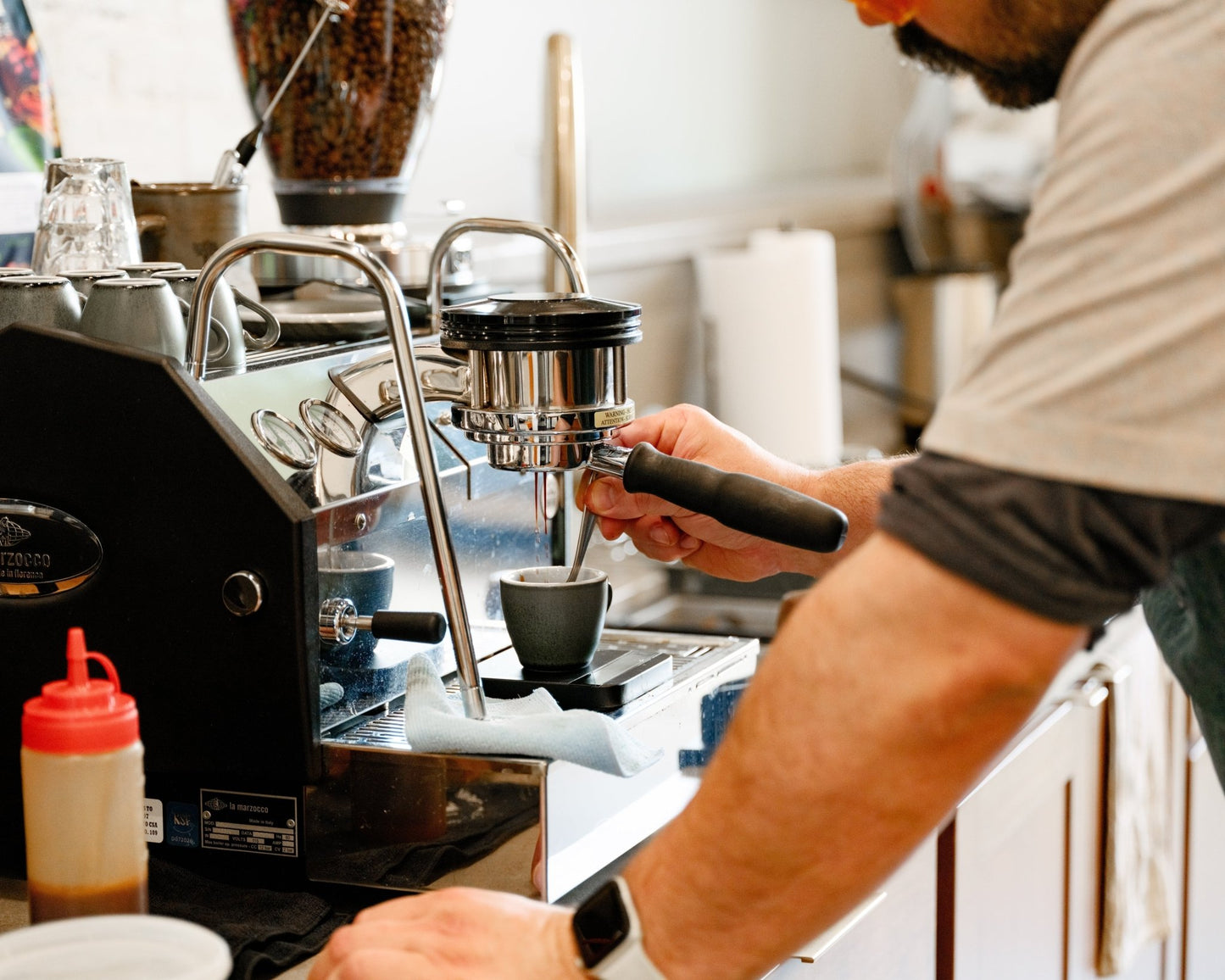
One of the most common questions we get is: “Which of your coffees should I use for espresso?” The answer: any of them!
Espresso isn’t a type of bean or roast — it’s a brewing method. Hot water under pressure extracts a small, concentrated shot of coffee, and the flavor depends on the beans you start with.
Here’s how to think through your choice:
Starting Out: Keep It Easy
If you’re new to espresso, begin with coffees that have chocolate, nutty, or caramel notes. They’re more forgiving, pair well with milk, and are less finicky when dialing in. Once you feel comfortable, branch into brighter, fruitier coffees.
Your Machine
Not all espresso machines are the same. Some allow you to adjust pressure, temperature, and shot time with precision. Others are more “plug and play.” Both are great — but keep in mind that higher-end machines can make it easier to work with lighter, more complex coffees.
Your Taste
This is the fun part. Do you want a shot that tastes sweet and rich like dark chocolate? Something adventurous and fruit-forward? Or maybe a balanced middle ground that pairs beautifully with milk? Your preferences should guide your choice.
Why Lighter Coffees Can Take Longer to Dial In
Lighter roasts are denser and less soluble, which means the flavors don’t extract as easily. They often require:
- A finer grind
- Slightly higher temperatures
- More attention to shot time and yield
The reward is a vibrant, layered shot — but it can take patience to get there. If you’re newer to espresso, don’t be discouraged if these coffees feel trickier at first.
The Bottom Line
There’s no single “espresso roast.” The best espresso is the one you like best in the cup. Start simple, experiment often, and let your taste buds be your guide.
